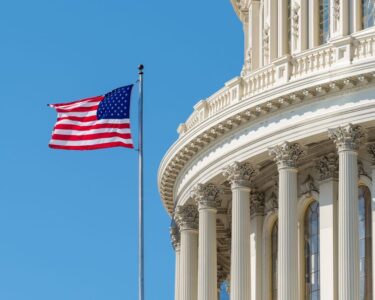Ask someone in the United States to name five events important to the country’s foundation and there’s a good chance they’ll mention the Pilgrims.
That’s what researchers found a few years ago when they put that question to some 2,000 people. The Revolutionary War, Declaration of Independence, Christopher Columbus’ “discovery” of the Americas and the Civil War topped the list. But coming in seventh place were the Pilgrims, the team reported in 2022 in Memory Studies.
Their inclusion in the list is bizarre, says coauthor Abram Van Engen, an English professor at Washington University in St. Louis interested in national origin stories. “There’s no great reason why we start America with the Pilgrims…. They’re kind of late to the game.”
Before them, after all, came the Native Americans, Spanish settlers in St. Augustine, Fla., and European settlers — and the slaves they brought with them — in Jamestown, Va. But the Pilgrims’ tale of religious persecution, perseverance and self-governance provides people with a tidy, if aggrandized, national origin story, says Van Engen.
The “Thanksgiving myth” is part of that tale, says coauthor and cognitive psychologist Henry Roediger, also at Washington University. The shorthand for that story, he says, goes like this: In 1621, the Pilgrims and Native Americans “had this peaceful meal and powwow [while] singing kumbaya.”
The two groups did engage in a peaceful harvest celebration in the fall of 1621, history suggests. But historians are quick to point out that the tidy tale ignores context, particularly the deadly diseases and bloody wars that devastated Indigenous populations both before and after the occasion.
Despite persistent efforts to flesh out the historical record, the kumbaya vision persists. That’s because history and memory, far from being interchangeable as commonly assumed, often exist in opposition. History is rooted in fact, while memory is rooted in story. When shared across individuals, those stories — with their half-truths, exaggerations and elisions — foster unity.
Origin stories like the Thanksgiving one are particularly sticky as they underpin a group’s raison d’être. Fixing or changing the story risks muddying the plot and tearing apart the group, says Van Engen. “The Pilgrims just become right for telling [the] stories … that we want to tell about ourselves.”
Mythological origin stories are not unique to the United States. “Each nation has its heroic story. That is the tradition of collective memory,” says Chana Teeger, a sociologist at the London School of Economics and Political Science who studies how South Africans teach about apartheid.
But scholars are starting to grapple with how nations should contend with difficult pasts. “How do you keep a strong national identity and patriotism while at the same time acknowledging the more negative aspects of your history?” Roediger asks. The answer, as evidenced by increasing calls for racial reckonings in the United States and elsewhere, is very much a work in progress.
Thanksgiving has become a “mental habit”
Stories, Aristotle observed some 2,400 years ago, contain a distinct beginning, middle and end strung together via a causal chain, or plot.
Our brains are wired for such stories, psychologists discovered much later. People rely on clear narratives to avoid information overload, anthropologist James Wertsch and psychologist Olivia Jäggi, both of Washington University, reported in 2022. Our story-minded brains turn us into “cognitive misers,” they wrote in Progress in Brain Research. The pared-down nature of stories, in other words, is much easier for us to remember than the complex, often ugly, arcs of history.
For that 1621 Thanksgiving, the complex historic arc goes like this. Up to 90 percent of the Wampanoag population had died from an epidemic brought by a previous wave of European explorers by the time the Pilgrims arrived in December 1620 in what’s now Massachusetts. The weakened community faced threats from an encroaching neighboring tribe. Meanwhile, the Pilgrims, unaccustomed to the new environment and climate, were dying of starvation and disease.
In March 1621, those struggling groups formed an alliance. The Wampanoag people could teach the Pilgrims how to harvest crops and the Pilgrims could protect the Wampanoag people from invaders. The peace did not last. Over the next several decades, the settlers’ population exploded and European leaders displaced the Wampanoag community, often through dishonest or violent means. War broke out in 1675, killing hundreds of colonists and thousands of Native Americans. Settlers killed the Wampanoag leader and displayed his head on a spike for two decades.
“The common narrative makes the settlers look like the good guys. Once you start chipping away at it, then everything falls apart,” says social studies educator John Bickford of Eastern Illinois University in Charleston.
History and memory have different relationships to the past, Wertsch explains. Historians will sacrifice narrative to preserve the facts. Agents of collective memory, such as political leaders, museum curators, teachers and family members, will sacrifice the facts to preserve the narrative — and group solidarity.
Consequently, memory and history are often at loggerheads, wrote French historian Pierre Nora in the 1989 Representations. “Memory and history, far from being synonymous, appear now to be in fundamental opposition.”
Moreover, the narrative habits offered up by memorable, though potentially fictitious, stories are just as hard to break as other habits, such as stopping nail-biting or forgoing that daily cup of coffee. For instance, we hear the word “bread” and we think “butter.” We hear “Thanksgiving” and we think Pilgrims and Native Americans singing kumbaya.
The Thanksgiving myth came together slowly
But in fact, adding Pilgrims to the Thanksgiving narrative is a surprisingly recent affair, beginning some 200 years after their arrival in New England.
Thanksgiving was initially an altogether more informal affair. European settlers celebrated thanksgivings, or harvest festivals, even before the Pilgrims’ arrival. And the Pilgrims themselves were somewhat sporadic with their feasts, celebrating the day when new friends or supplies arrived from Europe or when they defeated the Native Americans in various wars. In 1789, Thanksgiving wasn’t a national holiday but George Washington issued a proclamation celebrating the day in the name of an “Almighty God.”
In the 1820s, when the United States was roughly 50 years old, things started to formalize. Research into nation building shows that the half-century point is about when official histories, such as those in textbooks, begin to appear, Van Engen says. Such histories typically double as memory projects (SN: 4/12/22).
In the United States, those projects began at a time when the young nation was shifting from an agrarian to an industrial society. As people moved away from their birthplaces for work, kinship ties were weakening. Starting in 1827, Sarah Josepha Hale, author and editor of a prominent women’s magazine, began calling for an official and family-oriented Thanksgiving holiday to bring families back together. Nearly four decades later in 1863, with the country in the midst of the Civil War, President Abraham Lincoln took heed and turned Thanksgiving into a national holiday to promote unity.
From that point, presidents — powerful players in building a nation’s collective memory, and the accompanying feelings of national pride — began issuing annual Thanksgiving proclamations, says political scientist Judd Birdsall. Birdsall, of Georgetown University in Washington, D.C., has read every one of those speeches to see how those memories evolve and coalesce over time to eventually capture the modern-day Thanksgiving spirit. “It’s a very niche specialty,” Birdsall admits.
Theodore Roosevelt made the earliest vague reference to “the first settlers” in his 1905 proclamation, by noting their many hardships, Birdsall reported in 2021 in the Review of Faith & International Affairs. Franklin Delano Roosevelt identified the Pilgrims by name in 1939. But only after World War II do Pilgrims come to regularly feature in these proclamations, morphing into “archetypical Americans,” Birdsall says.
Pilgrims’ progress
When researchers asked some 2,000 U.S. survey respondents to list five events “important to the foundation of America,” top choices included the Revolutionary War and Declaration of Independence. But Pilgrims, who arrived after many others and had little to do with American origins, still came in seventh with 17 percent of the vote, researchers found. That could be due to the fact that, centuries after their arrival, the Pilgrims’ story of dining with the area’s Native Americans became Thanksgiving folklore.
Those speeches also show how America’s founders and political leaders have typically either ignored Native Americans or treated them as supporting actors to the main story. Their first appearance in the Thanksgiving story is in 1908, with Teddy Roosevelt’s pejorative mention of an “Indian haunted wilderness.” In 1980, President Jimmy Carter obliquely referenced the Native Americans by calling Thanksgiving “a commemoration of the day America’s earliest inhabitants sat down to a table with European colonists.” Ronald Reagan made Native Americans more central to the story, noting in 1986: “Indeed, the Native American Thanksgivings antedated those of the new Americans.”
America’s origin story is still in its messy middle
Breaking up with the Thanksgiving narrative is no easy feat. But some people in the United States are starting to question Thanksgiving and other stories pointing to the country’s rosy beginnings, Wertsch says. “How do you [begin to] break a bad habit? You have somebody point it out to you.”
That’s what happened, say Wertsch and others, when a group of journalists at the New York Times launched the 1619 Project a few years ago. Led by journalist Nikole Hannah-Jones, that long-term endeavor began the U.S. story with slaves’ arrival in Virginia in August 1619. The nation’s story, they argued, spirals outward from that ugly point.
“If there’s anything that debunks our national origins, it’s the 1619 Project,” Bickford says.
Today, that project has come to frame many of the country’s ongoing culture wars, especially fights over how to teach history. Institutions, such as schools and museums, become places where history and national identity collide, says Teeger. “History education [is] a site where collective memories are negotiated.”
Social scientists refer to conflicts over how events ought to be remembered as “mnemonic standoffs.” In the case of Thanksgiving, the standoff is over whether Thanksgiving ought to be remembered as a day of celebration or, as a growing chorus of Indigenous people and their allies call for, a day of mourning. Such standoffs illuminate the central tension between history and collective memory, researchers say. How do people maintain unity while acknowledging their difficult pasts?
Historians and social scientists used to assume that collective memories need to be positive, even mythological, to succeed. “Forgetting, I would go even as far as to say historical error, is a crucial factor in the creation of a nation,” French philosopher and historian Ernest Renan argued in 1882.
Contemporary researchers question that view. Georgian people’s collective memories, for instance, include ideas of the Eastern European country as a perpetual underdog, says anthropologist Nutsa Batiashvili of the Free University of Tbilisi in Georgia. “The skeleton narrative, which repeats itself, is that a big enemy comes, and Georgians fight heroically, but they have traitors inside. And they lose the war but still manage to save the culture and integrity and identity.”
Can people in the United States rewrite their national story to reflect this sort of complexity? That remains an open research question, Wertsch says. Stories work best when they have a neat beginning, middle and end. But Thanksgiving, and the broader American origin story, remain caught in the messy narrative middle. “We don’t have an ending of racism in America. It’s still here,” he says.
The more optimistic framing, Batiashvili says, is that the American story is still being written. “It’s a narrative in the making.”





